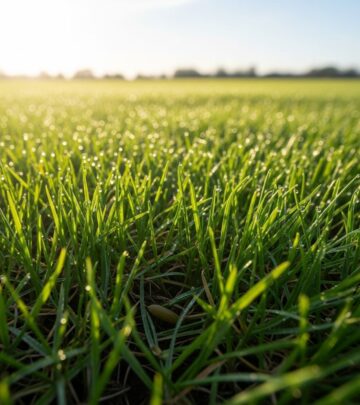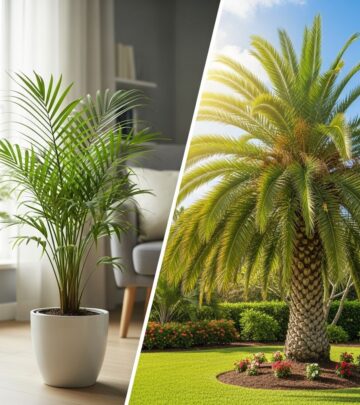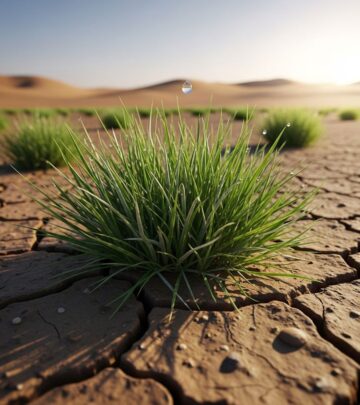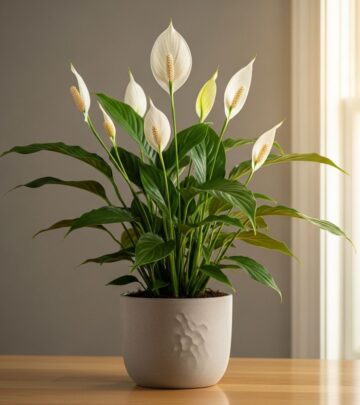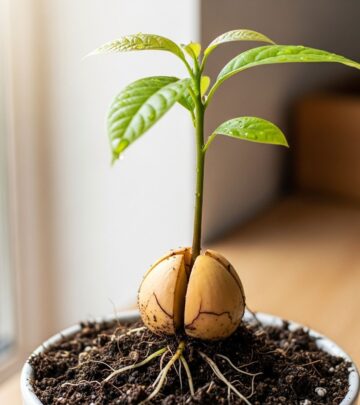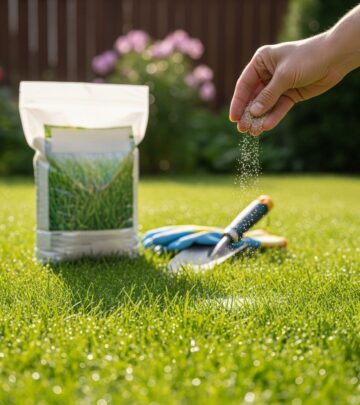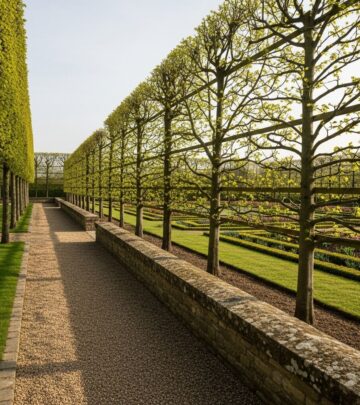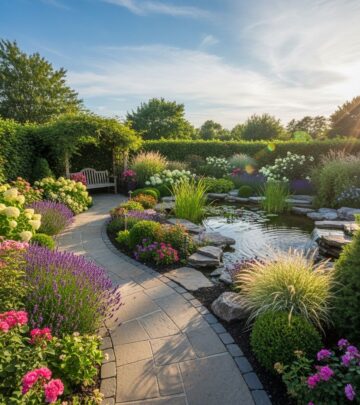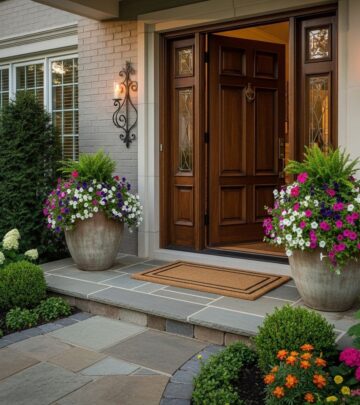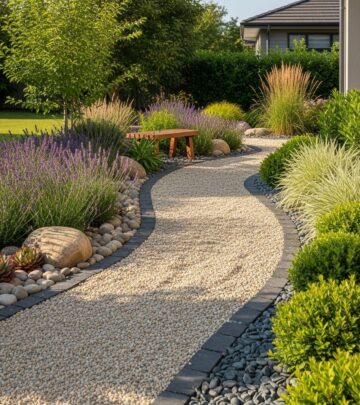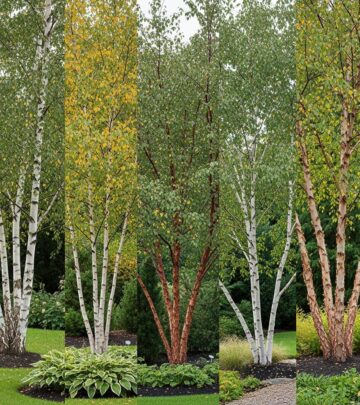Foliage Garden Design: Expert Tips For Lasting Beauty
Discover how to transform your landscape using colorful, textural, and artfully arranged foliage that delights all year long.
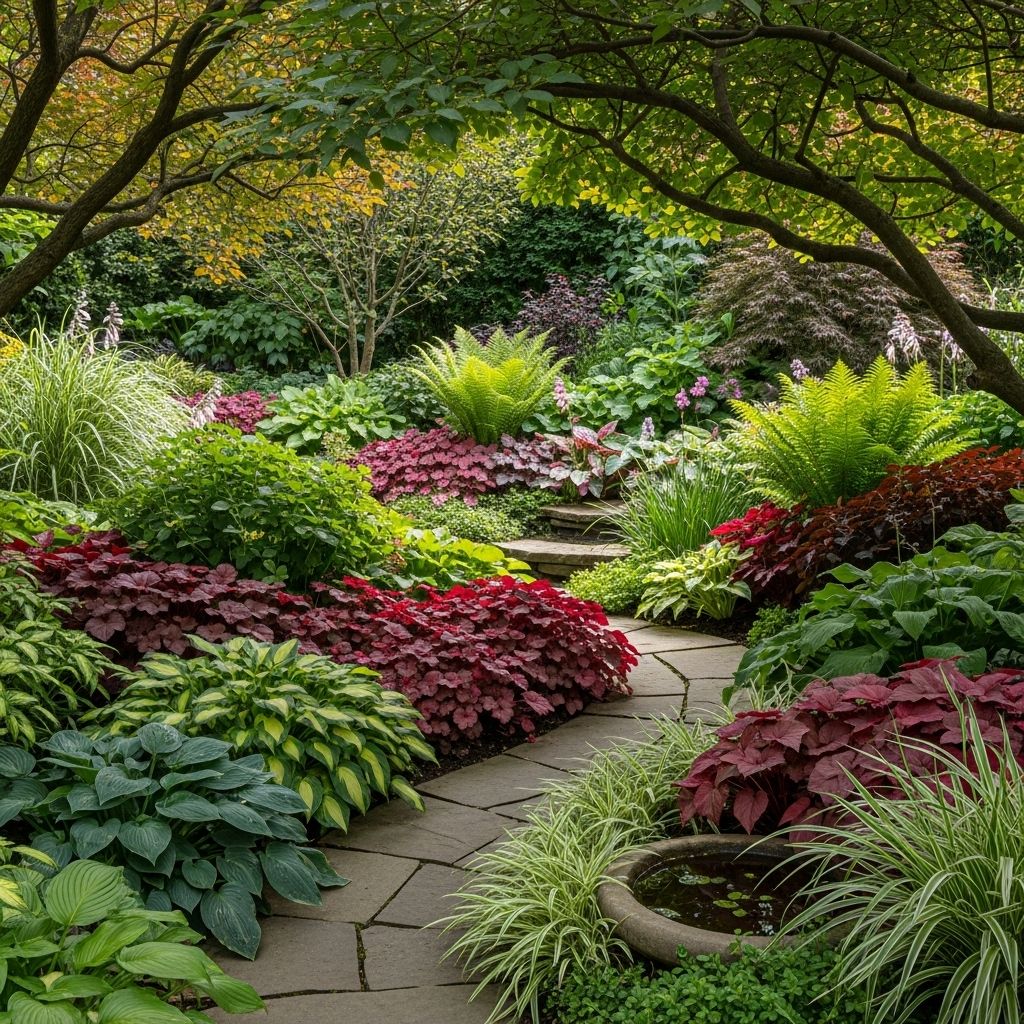
Image: HearthJunction Design Team
Designing with Foliage Over Flowers
Flowers come and go, but the enduring presence of foliage offers far more than a supporting role in garden design. By shifting focus from fleeting blooms to the lasting beauty of leaves, you can create a garden that remains lively, structured, and interesting through every season. Harnessing the power of foliage elevates your landscape with bold textures, captivating colors, and striking forms, all while solving common design challenges and helping unify your outdoor space.
Why Foliage Matters in Garden Design
Foliage isn’t just a backdrop for flowers—it’s a dynamic design element in its own right. Here’s why using foliage as a central theme can dramatically enhance your garden:
- Longer-lasting impact: Leaves endure far longer than most floral displays, providing consistent visual interest.
- Color diversity: From the freshest chartreuse to deep burgundy, foliage comes in hues that rival any bloom.
- Texture and form: Leaves vary dramatically in shape and surface, allowing for nuanced contrasts and harmonious blends.
- Structural function: Foliage plants establish the backbone of garden beds, filling gaps and defining spaces throughout the year.
Foliage Color: Your Secret Design Weapon
Creative use of foliage color is one of the most effective ways to elevate your garden. Unlike flowers that may only last a few weeks, leaves offer enduring color—from bold and bright to subtle and variegated. Skillful color placement can breathe new energy into bland areas, unify disparate garden zones, or even solve challenging design dilemmas.
Ways to Use Foliage Color Effectively
- Color Echoes: Repeat a particular hue throughout your garden to create a sense of cohesion. For instance, use burgundy-leaved shrubs at intervals for rhythm, or scatter chartreuse groundcovers to brighten up shady spots.
Tip: Too many competing leaf colors can result in visual chaos. Select one dominant hue and use it liberally, surrounding it with supportive greens or softer shades for balance. - Find Unusual Color Sources: Don’t just rely on the obvious—look under leaves, along stems, or at the margins for surprising hints of raspberry, silver, or gold.
- Variegation Adds Drama: Plants with two-toned or speckled leaves (like caladiums or variegated hostas) brighten dark corners and add instant drama to containers or borders. Use these as focal points or interplant them for extra sparkle.
Popular Foliage Colors to Try
- Deep burgundy and purple
- Bright chartreuse and yellow
- Cool blue-green
- Ivory, cream, or white variegations
- Silver and grey tones
Subtle Shape Echoes for Visual Harmony
While color is a go-to design tool, echoing the shape of leaves throughout your garden brings quiet cohesion that sophisticated designers love. By repeating similar leaf forms—whether oval, sword-shaped, or feathery—you weave a subtle thread that visually ties plantings together.
Creating Shape Echoes
- Mirrored Forms: Pair spiky, upright phormium leaves with feathery, vertical grasses for a dynamic, harmonious look.
- Contrast and Complement: Combine round-leaved plants (such as bergenia) with those that echo the same gentle curves in a different scale (for example, azalea).
- Layering: Place bold, large-leaved foliage in the foreground, echoing their forms in smaller or finer versions further back.
As you practice this art, you’ll notice a refined unity that can make even a busy garden feel intentional and serene.
Texture and Form: The Soul of a Foliage Garden
If color draws the eye, it’s texture and form that invite visitors to linger. Mixing fine, coarse, glossy, matte, and everything in between gives your garden depth and complexity all year—not just when flowers are in bloom.
Playing with Texture
- Fine Textures: Ferns, astilbe, and ornamental grasses lend a delicate, lacy effect.
- Coarse Textures: Hostas, bergenia, and canna lilies offer bold, substantial leaves for a tropical vibe.
- Glossy vs. Matte: Mix shiny-leaved evergreens with velvety lamb’s ears or fuzzy artemisia for tactile interest.
Without these contrasts, gardens become bland and predictable. The interplay of textures mimics the natural world and creates a richer visual experience.
Variety in Plant Forms
- Upright Forms: Columnar shrubs (like Italian cypress) or spiky phormiums add structure and movement.
- Mounding Forms: Boxwood, lavenders, or compact coprosmas gently soften hard edges.
- Cascading Forms: Trailing grasses or creeping rosemary spill over walls and edges for a relaxed, layered look.
| Texture Category | Plant Examples | Design Effect |
|---|---|---|
| Fine | Ferns, Astilbe, Coreopsis | Soft, airy, calming |
| Coarse | Hosta, Bergenia, Canna | Bold, dramatic, tropical |
| Glossy | Boxwood, Camellia | Classic, reflective, formal |
| Matte/Fuzzy | Lamb’s Ear, Artemisia | Inviting, tactile, soft |
Foliage as a Problem Solver
Beyond aesthetics, foliage is a powerful tool for addressing common garden challenges:
- Unifying Disjointed Spaces: Repeating particular leaf shapes or colors ties together separate garden beds, making the whole landscape feel intentional.
- Brightening Dark Corners: Light-colored or variegated foliage bounces sunlight, enlivening shady areas where flowers may struggle.
- Ground Cover and Weed Suppression: Dense, carpet-forming foliage like ajuga or sedum crowds out weeds and reduces maintenance.
- Screening and Privacy: Large-leaved or upright shrubs can quickly create green walls for privacy or windbreaks.
Consider foliage as your multi-tool—the element that fixes, fills, and frames your design all at once.
Choosing Foliage Plants: Best Options for Every Garden
No matter your climate or style, there’s a foliage plant to suit your needs. Seek out annuals, perennials, shrubs, and trees that stand out for their unique leaves as well as their adaptability.
Top Foliage Plants by Attribute
- Color: Coleus, Heuchera, Japanese painted fern, Smokebush
- Texture: Hostas, Lamb’s ear, Ferns, Ornamental grasses
- Variegation: Caladium, Variegated sedum, Variegated dogwood
- Form: Phormium, Boxwood, Italian cypress
Pair these as contrasts or complements according to your design theme. For example, bold, coarse hostas balance out fine-leaved ferns; trailing sedum offsets upright grasses.
Putting It All Together: Tips for a Foliage-Forward Garden
- Start with Structure: Place your largest or most dramatic foliage plants first to establish the backbone of the bed.
- Layer for Depth: Gradually step down from tall uprights in the back to mounding or sprawling types at the front.
- Mix Textures and Colors: Combine fine, medium, and coarse leaves; intersperse green with bursts of color or variegation.
- Repeat Key Elements: For unity, repeat a signature leaf color or shape in several places throughout the design.
- Edit Ruthlessly: Remove plants that disrupt the visual flow with jarring colors or mismatched shapes.
Design Checklist
- Does your garden have a unifying color or shape theme?
- Are textural contrasts present in every bed?
- Do you have structural plants for year-round interest?
- Are groundcovers, mounds, uprights, and cascades all represented?
Seasonal Interest: Foliage Through the Year
One of the greatest benefits of focusing on foliage is the ability to maintain garden interest from early spring to late autumn and even winter:
- Spring: New leaves emerge with vivid tones; some plants offer rosy or chartreuse growth before settling into summer greens.
- Summer: Layered textures and vibrant hues persist even when many flowers have faded.
- Autumn: Many foliage plants take on brilliant reds, golds, or purples before dropping their leaves.
- Winter: Evergreen foliage and colored stems provide structure and color when little else thrives.
Foliage for Containers and Small Spaces
Foliage-focused design isn’t just for sprawling landscapes. Containers, patios, and small garden beds can benefit just as much from artful use of leaves:
- Combine upright, mounding, and trailing foliage in pots for a dynamic, ongoing display.
- Mix variegated and solid-leaved plants for contrast and movement.
- Use containers to spotlight particularly bold or delicate foliage plants where they can be fully appreciated up close.
Frequently Asked Questions (FAQs)
What is a foliage garden?
A foliage garden is a landscape or planting design that emphasizes the color, shape, and texture of leaves rather than relying primarily on flowers for visual impact. This approach ensures year-round interest and design unity.
How do I create a cohesive foliage garden?
Choose one or two main foliage colors or leaf shapes to repeat throughout your garden. Balance bold plants with fine textures and edit out elements that disrupt the flow. Use variegated or brightly colored leaves to highlight focal points or energize dull areas.
Can foliage plants look good all year?
Absolutely. Evergreen shrubs and trees keep color and structure through winter, while deciduous plants offer changing hues in spring, summer, and autumn. Choosing a mix ensures your garden never looks empty.
Are there foliage plants for shade?
Many shade-loving plants offer spectacular leaves—think hostas, ferns, heucheras, and caladiums. Variegated types are especially useful for lighting up dark corners.
How do I combine foliage with flowers?
Foliage and flowers aren’t mutually exclusive! Use leaves as the garden’s backbone and allow scattered blooms to act as seasonal highlights rather than the main event. This approach yields an elegant, long-lasting display that never looks bare.
Conclusion: The Lasting Impact of Foliage
Designing a garden with foliage at the forefront is both practical and beautiful. By paying careful attention to leaf color, shape, and texture, you can create a vibrant, engaging landscape that dazzles in every season—long after the last flower has faded. Whether you’re planting a lush border, filling a container, or designing a quiet retreat, let leaves—not just blooms—guide your creative vision.
References
- https://www.gardendesign.com/landscape-design/foliage-garden.html
- https://ngb.org/foliage-plants-for-gorgeous-gardens/
- https://tapestrydesignstudios.com/foliage-plants-garden-design/
- https://www.gardendesign.com/plants/foliage.html
- https://www.finegardening.com/article/create-foliage-impact-3-easy-steps
Read full bio of Srija Burman

